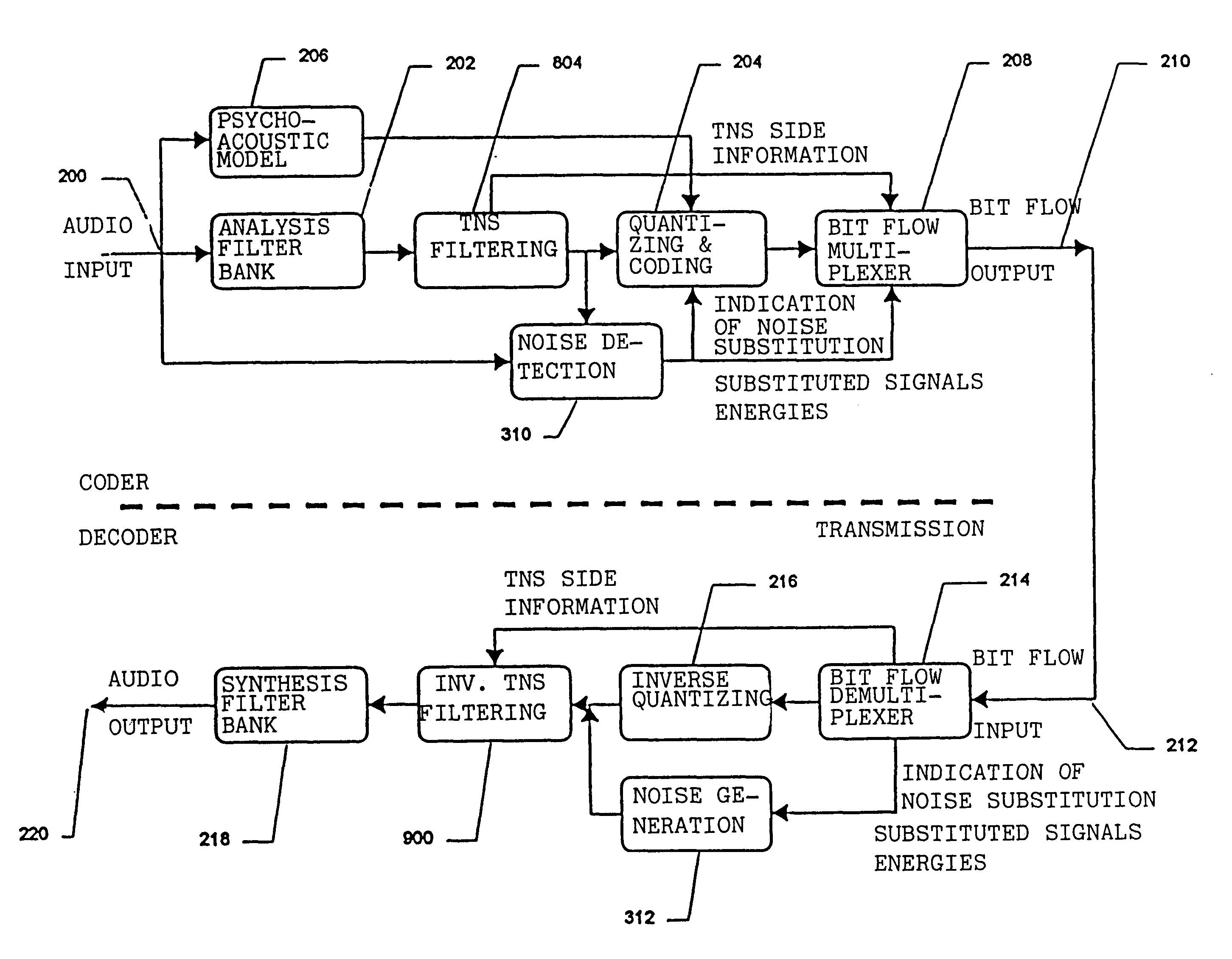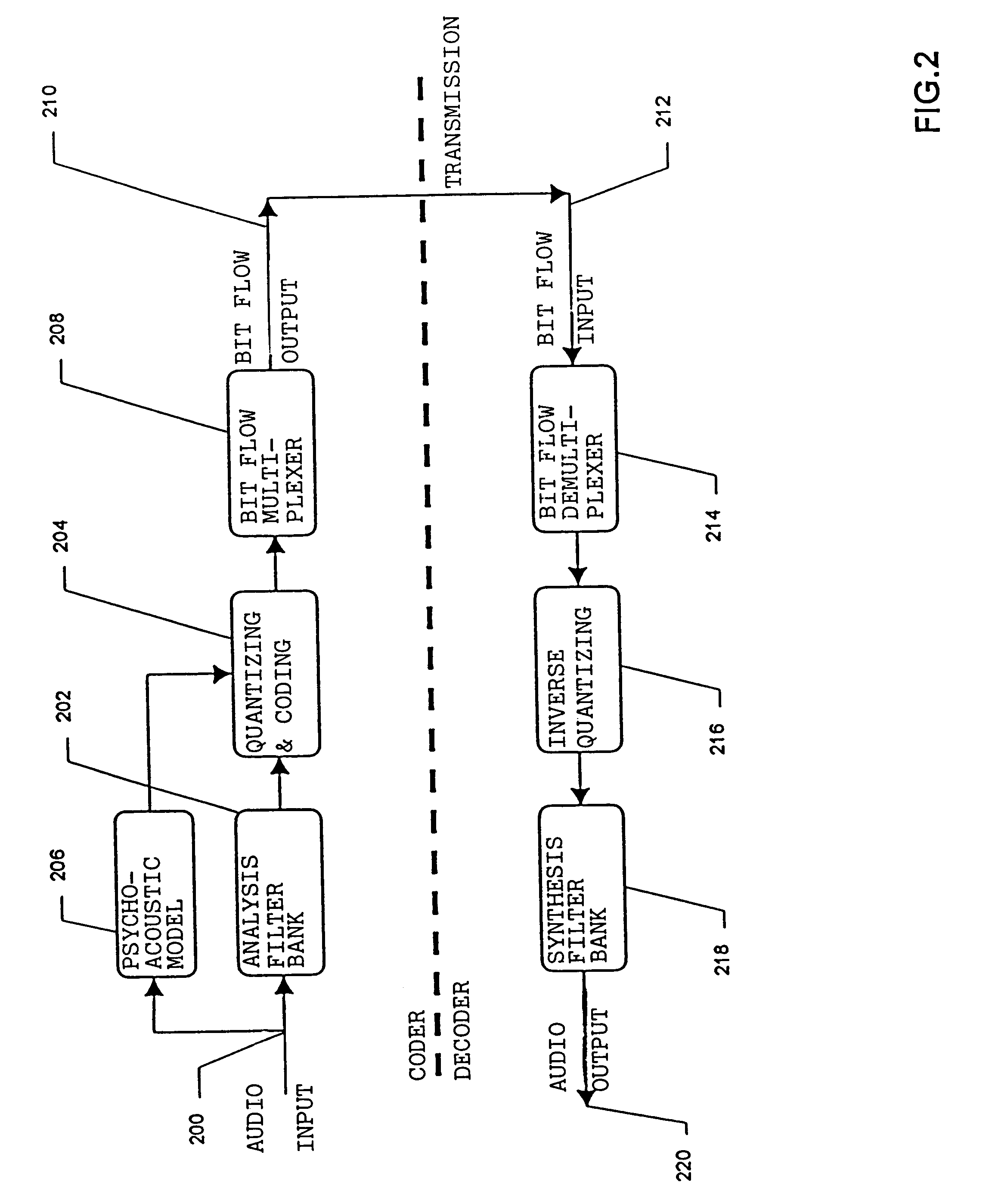Method for coding an audio signal
- Summary
- Abstract
- Description
- Claims
- Application Information
AI Technical Summary
Problems solved by technology
Method used
Image
Examples
Embodiment Construction
FIG. 1 shows a coder and a decoder according to the present invention. In comparison with the coder described in FIG. 3, the coder according to the invention, as shown in FIG. 1, contains a combination of TNS filtering and noise substitution. In contrast to the known coder, which performs noise substitution of spectral values, the coder shown in FIG. 1 additionally carries out noise substitution of the spectral residual values at the output of TNS filter 804. In groups of spectral residual values or scale factor bands with spectral residual values, the noise substitution ascertains a measure of the energy of the spectral residual values in a group or in a scale f actor band, and a noise substitution indication to quantizer and coder 204 as well as to bit flow multiplexer 208 is carried out analogously with noise substitution for original spectral values.
In the decoder, the opposite, analogous process takes place. Bit flow demultiplexer 214 supplies TNS side information to the invers...
PUM
 Login to View More
Login to View More Abstract
Description
Claims
Application Information
 Login to View More
Login to View More - R&D
- Intellectual Property
- Life Sciences
- Materials
- Tech Scout
- Unparalleled Data Quality
- Higher Quality Content
- 60% Fewer Hallucinations
Browse by: Latest US Patents, China's latest patents, Technical Efficacy Thesaurus, Application Domain, Technology Topic, Popular Technical Reports.
© 2025 PatSnap. All rights reserved.Legal|Privacy policy|Modern Slavery Act Transparency Statement|Sitemap|About US| Contact US: help@patsnap.com



